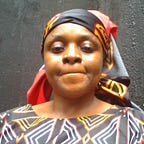The land of my birth is where originality and personality harbor in settlements. A country, one’s origins is where you hail from, a country within a region. Cameroon is a country in the CEMAC region in the continent of Africa. The country has had two heads of states since it gained its independence from the colonial masters. The Germans were the first colonial masters then the French and the English colonial masters since then the country has gone through the one party system to the multiparty system of government in terms of democracy.
In those good old days the German capital Buea was the seat of the government the country was called the Kamerons the old buildings made of zinc are still here to show as mark of German existence. The colonial masters then came in from France and Britain speaking French and English that is how we have come to the level of bilingualism. When we had independence in 1960 the politics was for the brains of the country; there was just one party and the country was called the Federal Republic of Cameroon. On the 1 of January 1960 French Cameroon gained independence from France under President Ahmadou Babatoura Ahidjo. On 1 October the formerly British Southern Cameroons united with French Cameroon to form the Federal Republic of Cameroon. The President Ahmadou Ahidjo governed for years and worked with many collaborators; as well as his successor Paul Biya in the same regime. The late president willingly handed the office of president to his successor Paul Biya who now called his new country Republic of Cameroon.
The country is made of ten regions formerly provinces, which makes it easy to govern as ten governors are responsible each over his own jurisdiction. The constitution divides Cameroon into ten semi-autonomous regions each under the administration of an elected regional council; the provincial capitals are further divided into divisions and subdivisions to make the people report to the areas in which they live at closest range within the shortest possible distance. The division is a partition within the province as seen in the splitting of a large group into smaller groups. Division is one of the four basic operations in mathematics (addition, division, multiplication and subtraction) where 20 divided by 5 equals 4 and 2 divided by 2 equals 1.
The English speaking regions where my roots are grounded have the districts miles and quarters to situate and locate within smaller units. The Clerk’s quarters in the Buea subdivision and the Meta quarters in the Bamenda subdivision to name a few. In Fako division from half mile Victoria-Limbe to mile 18 Buea displays the mileage in a similar way from mile 1 up station to mile 6 Nkwen displays a familiar pattern. The miles describe covered distances gone by foot as well as travel by bike and traffic; whereas the quarters are for rooms and domesticity where home and family life abound. Miles also exist in grammatical expressions ‘to go the extra mile’ ‘miles away’. The districts are in the local government within the cities or towns which are large and densely populated urban areas where we conform to the citizenship and exercise our civic responsibilities as good citizens in our places of residence; we all go to the sub divisional officers to certify our births using the birth certificates in order to get our identification papers, thereafter with the national identity card we go for voter’s card to participate in the electoral process and nation building.
As for me, I want for myself a sweet little cottage in the country, ‘Fabrique au Cameroun’.
